Selling online has become a lucrative deal for many businesses thanks to its benefits. You can create your marketplace or join an ecommerce platform and expand your business by selling electronically. Thus, digital commerce is projected to reach $12.93 trillion by 2029.
In this regard, digital products provide a number of benefits for sales. They take no space as physical items and allow you to manage your sales online.
In this article, we explore how you can build an online marketplace for digital products. Our experts discuss the key features, the steps of development, and monetization approaches. Read on to learn how you can navigate this strategic process.
What is a digital product marketplace?
Let’s learn what a digital product is to understand the specifics of these marketplaces. Digital products are goods that exist in a digital form and are sold electronically. Creators and businesses can develop and sell them online. What makes them a viable business idea is that you do not need to handle them like the inventory of physical products. So, overhead costs with digital products are lower than with physical items.
Today, there are many digital product marketplaces. They offer online courses, ebooks, printable digital products, licensed digital content, premium content libraries, domain names, and other products.
Such platforms can serve as a medium for sellers who provide products and services to a shared user base. These marketplaces also provide an ecommerce space where sellers can create individual stores and sell their digital products through those stores.
Examples of digital product marketplaces include Creative Market, Sellfy, Envato, DPD, Stan, Whop, and other platforms. Prominent marketplaces like Amazon, eBay, and Etsy also sell digital products.
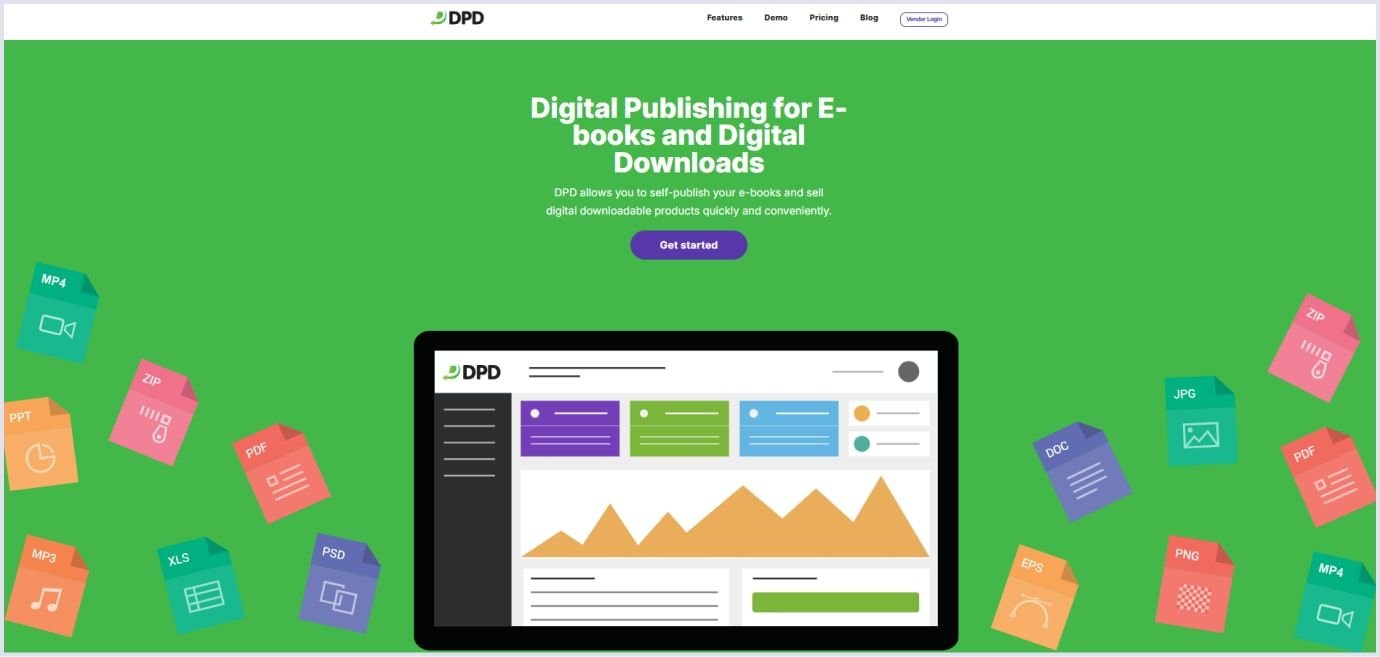
Source: DPD
Such platforms use different monetization strategies. In this article, we consider the subscription-based marketplaces. It means that a marketplace offers its services, tools, and environment on a monthly or yearly payment basis.
For example, SendOwl suggests three plans starting at $1 per month for two months. Then, the plan upgrades to Starter, Growth, and Pro with different prices.
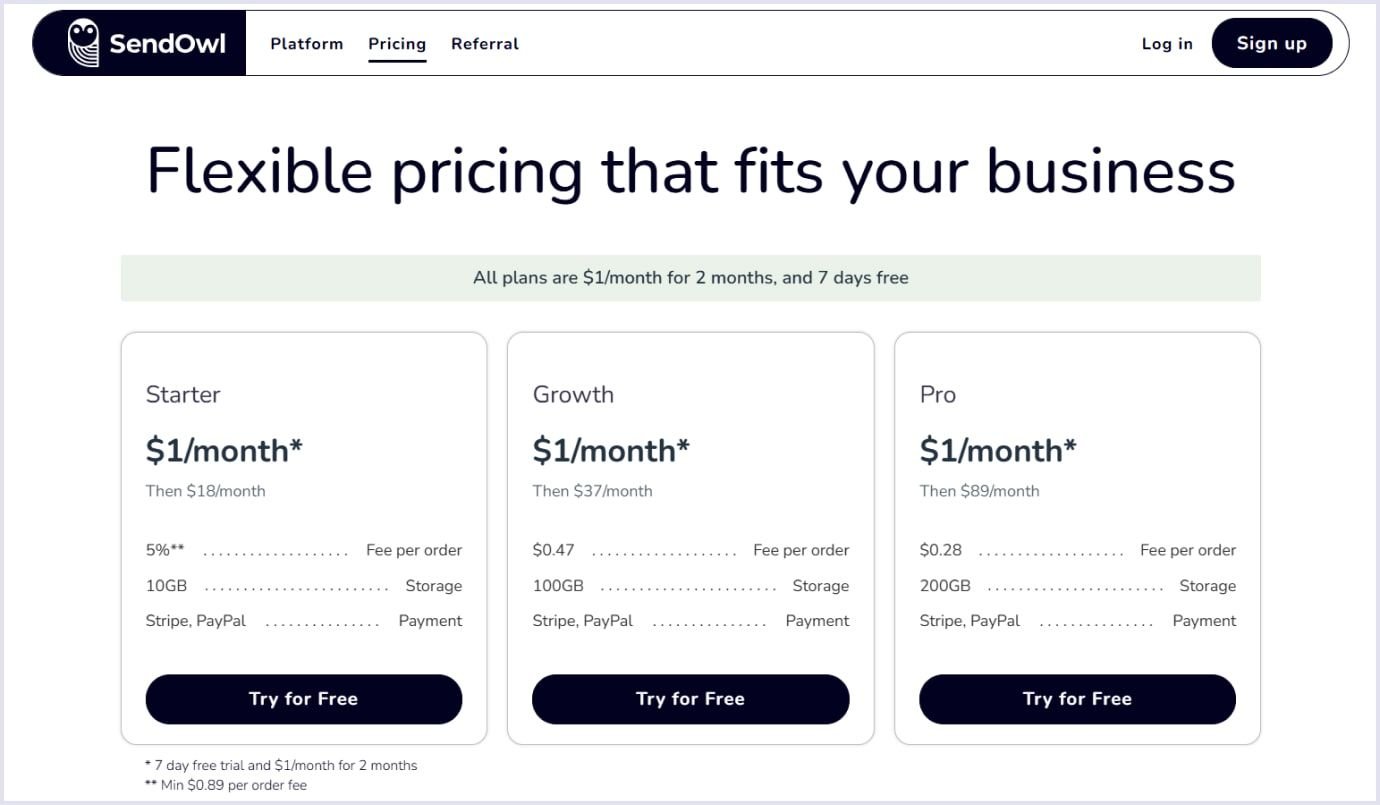
Source: SendOwl
Key features of a subscription-based digital marketplace
The core features of the subscription-based marketplace that sells digital products ensure that vendors get helpful tools and buyers can find what they want. Here is a description of the key features that will make your marketplace a convenient and enjoyable place for both sides.
Flexible subscription plans
These include different subscription models, such as tiered memberships, freemium, or usage-based models. The basic features for handling subscriptions include sign-ups, renewals, cancellations, and refunds. Also, the following aspects will make your subscription system transparent and convenient:
- Consider using flexible payment integrations to process subscriptions. The integrations should allow for managing recurring billing and using different payment methods, such as credit cards or digital wallets.
- Ensure that the user interface and user experience sides offer easy management of plans, viewing usage, and updating payment information.
- Provide transparent guidelines for how subscriptions are calculated, how sellers can offer their products within subscriptions, and what revenue they will get.
Trial periods and discounts
This feature is an effective tool to attract and retain your customers. When defining trial periods and discounts, make sure that your customers understand the value of your platform.
Trial periods on digital product marketplaces include free access to premium products and services. These periods typically last 7 to 14 days. Also, marketplaces offer a 30-day money-back guarantee.
Additionally, you can offer discounts for your digital products and services. Unlike trials, they help you retain your customers on an ongoing basis. Moreover, you can provide discounts for returning customers or referrals to expand your customer base.
For example, Creative Market offers generous discounts on design assets. They include free assets worth up to $1,000, depending on subscription. Also, the platform gives discounts that grow with subscription timelines and provides pay-back credits for purchases on the platform.
Robust content management system (CMS)
Since content is the key asset in the digital product marketplace, a robust content management system ensures the proper marketplace’s workflow. We recommend choosing a headless CMS where the frontend displaying layer is decoupled from the backend process logic. Thus, you will get easy and consistent updates across your platform at different digital touchpoints.
If you create your own CMS, consider using an API-first approach for flexible and dynamic content delivery. Your CMS should also be integrated with a content delivery network (CDN). The CDN ensures that your content is delivered as you need, and your CMS scales based on traffic load.
For example, Amazon CloudFront is a robust content management tool that serves even the most sophisticated storefronts. Its features help you deliver dynamic content quickly and securely.
Content access management
Defining how the content on your marketplace is accessed ensures convenience and security for your marketplace. For this, establish clear user roles, such as seller, buyer, and admin. Also, consider that some customers use your platform for free or have access to premium content. Thus, content access should be prioritized accordingly.
Additionally, enable single sign-on (SSO) to allow users to log in once and access multiple devices seamlessly.
User profiles and dashboards
When creating user profiles, depending on your platform’s roles, consider making them convenient to sell and buy digital products. The user profile should include a personal information page where they can manage their data.
Make user profiles customizable. The ability to choose preferences and track sales and purchase history is crucial for your customers’ engagement.
Also include informative dashboards. For example, the seller’s dashboard can include sales metrics and products available for sale. Meanwhile, buyers’ dashboards may include purchase history and wishlists.
Below is an image of the seller profile we created to help them manage domain name sales on Dan.com.
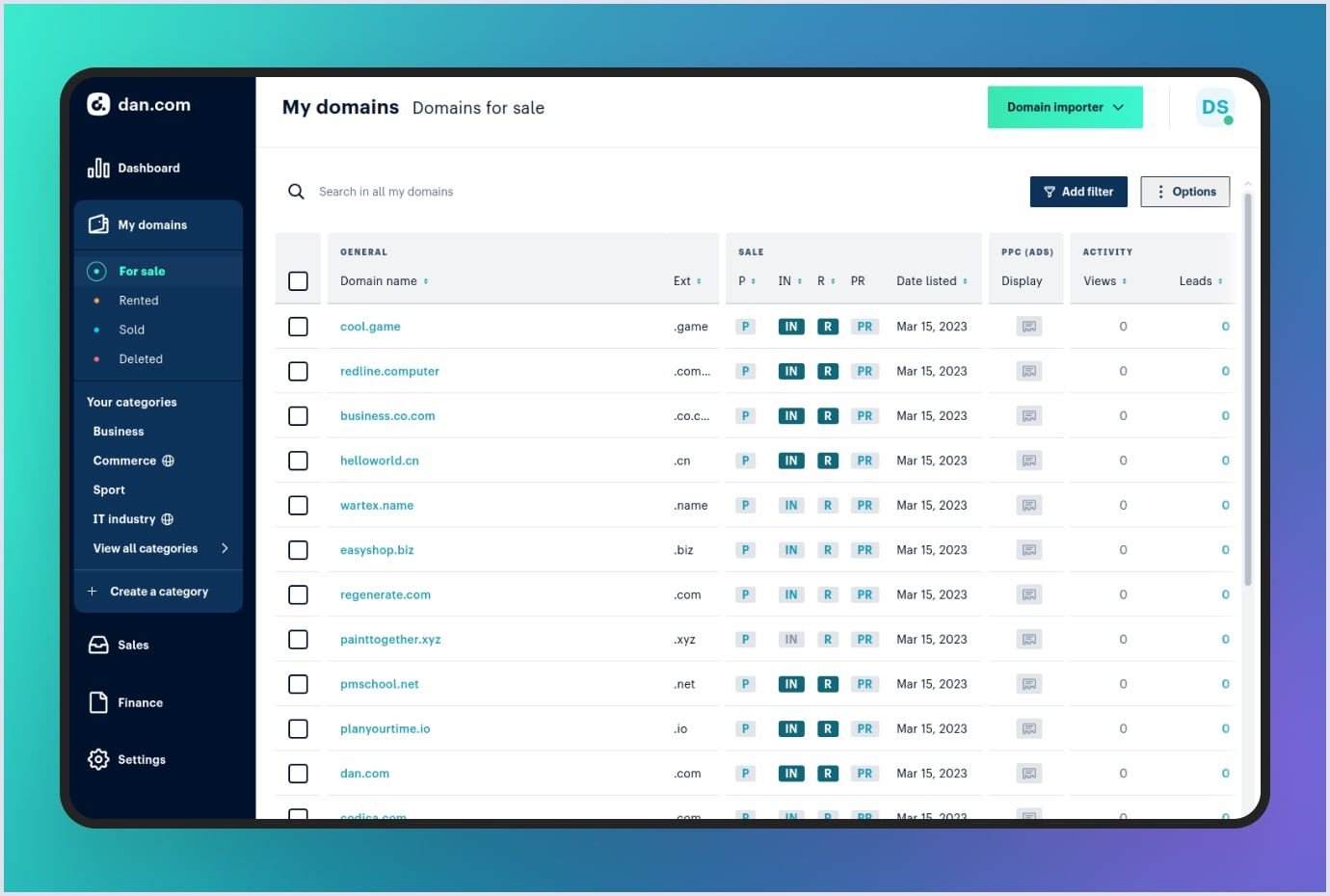
Recurring billing and payment integration
To make these features convenient for your customers, first, evaluate which payment integrations you need to include. Consider an integration with payment processors that support many currencies and operate in different countries. We recommend integrating Stripe, Adyen, or PayPal.
What else is crucial about reliable payment gateways is their security. They have built-in Know Your Customer (KYC) and Anti-Money Laundering (AML) verification technologies. Moreover, they support PCI DSS (Payment Card Industry Data Security Standard) to protect cardholder data.
When implementing recurring payments, consider making the process clear and convenient to your customers. You can achieve that by setting the payment processor’s API to automated recurring billing. For example, Stripe supports multiple models to manage recurring subscription payments.
Product recommendations and personalization
Today, recommendation and personalization systems have become an indispensable part of online marketplaces. Digital product platforms also follow the trend. Typically, algorithms highlight personalized recommendations based on the user’s browsing and purchasing history.
In this regard, AI technologies are especially helpful. They analyze user behavior in real time, adjusting as needed depending on changes in customer interactions with your marketplace.
For example, Amazon’s search engine can highlight the products based on the attributes that are most important for a customer. Thanks to LLM, the platform adjusts product listings according to customers’ intentions.
Vendor and product reviews
Providing ratings and reviews on your digital product platform creates trust in your platform. The reviews help sellers improve their products and services, and buyers get helpful information before purchasing.
When implementing this feature, consider enabling views about products and vendors. Also, use a standardized scale, such as a five-star rating. Make the process of giving feedback simple and provide it on the vendor and product pages to improve its visibility.
Consider also restricting reviews to those who bought a product to ensure that the feedback is trustworthy. Implementing proper moderation will also minimize inappropriate or irrelevant feedback.
For instance, Etsy allows buyers to remove their reviews within 100 days of the estimated delivery date or contact the support team to remove the feedback. The platform also encourages settling disagreements in direct messaging. Thus, buyers get what they need, and sellers preserve their reputation, which helps the platform run.
Comprehensive vendor portal
Ensure that vendors on your digital product marketplace can easily join and manage their sales processes. For this, consider including the following key vendor portal features:
- Simple sign-up and onboarding. Provide vendors with a simple registration process where they can sign up and provide necessary documentation. This includes collecting essential information such as business details, tax identification numbers, and product categories. Ensure automated checks or manual reviews of submitted documents for verification.
- Vendor dashboard. This should include the tools for managing product catalogs, orders, payments, and transaction histories. Also, include rating and review monitoring to help vendors address issues and provide quality products.
Analytics and reporting tools
These features help your sellers track their key performance indicators (KPIs) and metrics, such as user engagement, conversion rates, customer retention, and sales performance.
An important aspect of these features is analytics tools. Tools like Google Analytics, Contentsquare, Optimizely, and Fullstory will give you and your vendors insights into buyers’ experiences. So, if you run a digital product marketplace, these are invaluable tools to optimize user experience on your platform.

7 steps to develop a subscription-based digital marketplace
Now that you know the key features of your marketplace, you can proceed to development. Let’s discuss the key steps you need to create an engaging online marketplace for digital products.
Step 1: Product discovery phase
At Codica, we start the development of a digital product marketplace by validating your idea during product discovery. At this step, we consider your marketplace vision, business goals, and requirements of your solution. Our team performs market research and analyzes your target audience, competitors, features, and platform logic.
Product discovery lays the necessary foundation for optimizing the development process. Based on this analysis, we provide you with tech stack and team recommendations, clickable prototypes, and project estimates.
We recommend prototyping your solution at this step and then move on to development. With the prototype as a draft of your platform, you can better understand how it will work with fewer resources spent.
Below is an example of a travel itinerary service prototype showing the user flow.
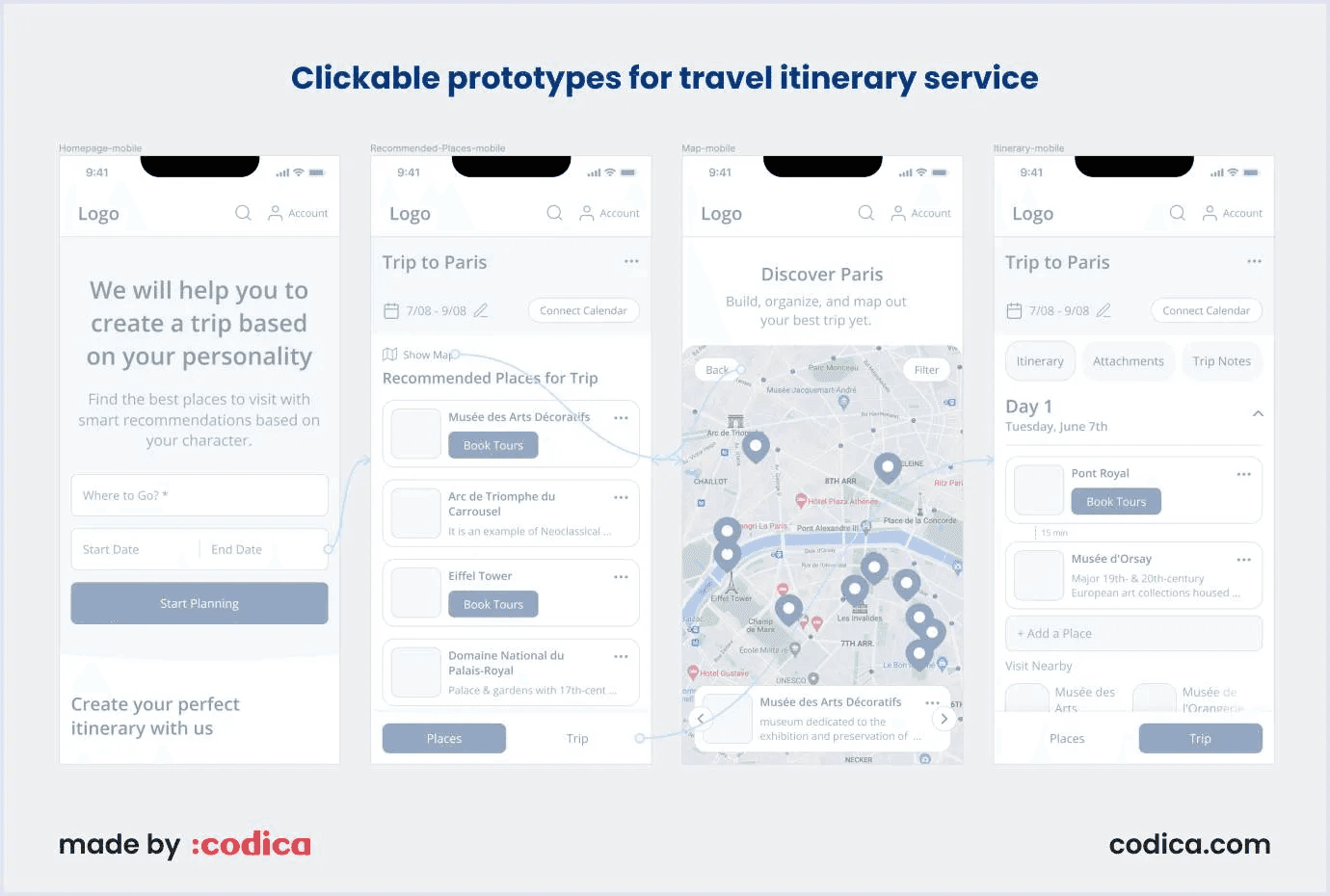
Read also: What is Project Discovery Phase in Custom Software Development
Step 2: UI/UX design
When designing a digital product marketplace, the basic thing to consider is user needs and goals. How can you implement such a user-centric design strategy? Consider the following aspects in marketplace UI/UX design services:
- Logical organization of product categories. Whether these are ebooks, software, or domain names, logical and familiar design patterns will help your customers sell and buy what they want;
- Personalization. Your design should help sellers and buyers customize their profiles, save items to wishlists, get recommendations on the relevant products, and adjust sales as needed;
- Synchronization across devices. Mobile-first and responsive design is a go-to approach in modern solutions. With synchronized UI across different devices that fits various screen sizes, you can engage and retain your customers.
Step 3: Choosing software architecture
There are two primary approaches to software architecture: monolithic and modular. Monolithic architecture holds software as a single whole. If one part needs changes, the whole solution should be redone. It is challenging as a platform grows and needs to adapt to customer needs and tech advancements.
Over time, prominent marketplaces have understood the necessity of managing the platform parts separately rather than as an immovable whole. Thus, the concept of modular software architecture has appeared, which is abbreviated to MACH. It uses components that can be changed independently and includes microservices, APIs, cloud nativity, and a headless frontend.
We recommend you create a digital product marketplace with the MACH architecture, as it pays you off in the long run. Though you need to invest in tuning up the independent components, you get a flexible, scalable, and future-proof solution as an end result.
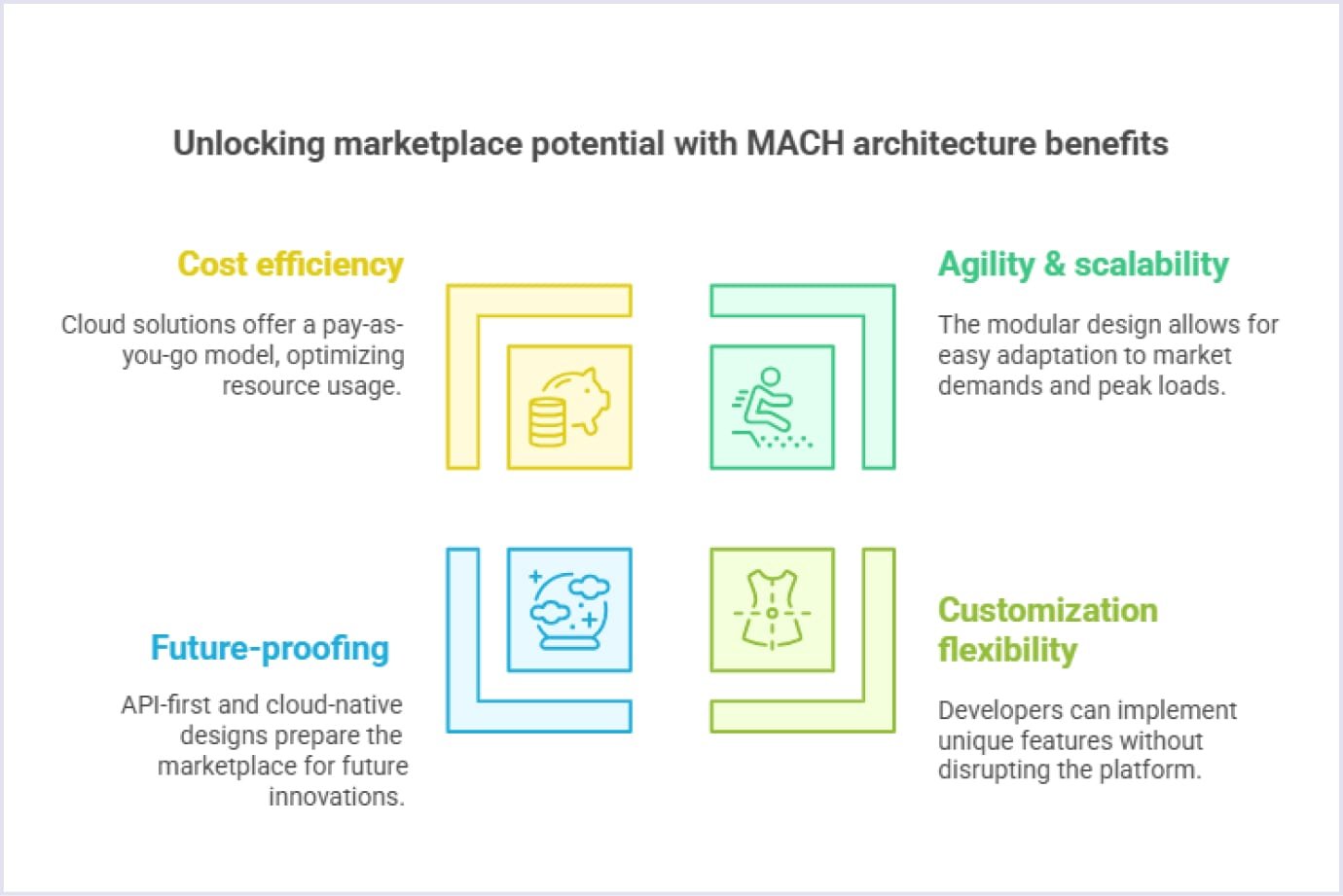
How are such benefits possible? As the parts of a MACH marketplace are independent, the failure of one of them does not stop the platform’s operation. Moreover, you can change, update, and secure them as you need. So, you do not need to redo the whole marketplace and, thus, save your resources in a long perspective.
Step 4: Technology stack selection
The right tech stack for online marketplace development will help you create a robust and secure solution. Thus, proven technologies are a necessity.
At Codica, we recommend the development technologies that will make your solution robust and flexible. We use TypeScript and React for frontend development and Ruby and Ruby on Rails for the backend part. Other technologies cover database management, DevOps services, and infrastructure.
Check out the image below for the tech stack we use for marketplace development at Codica.
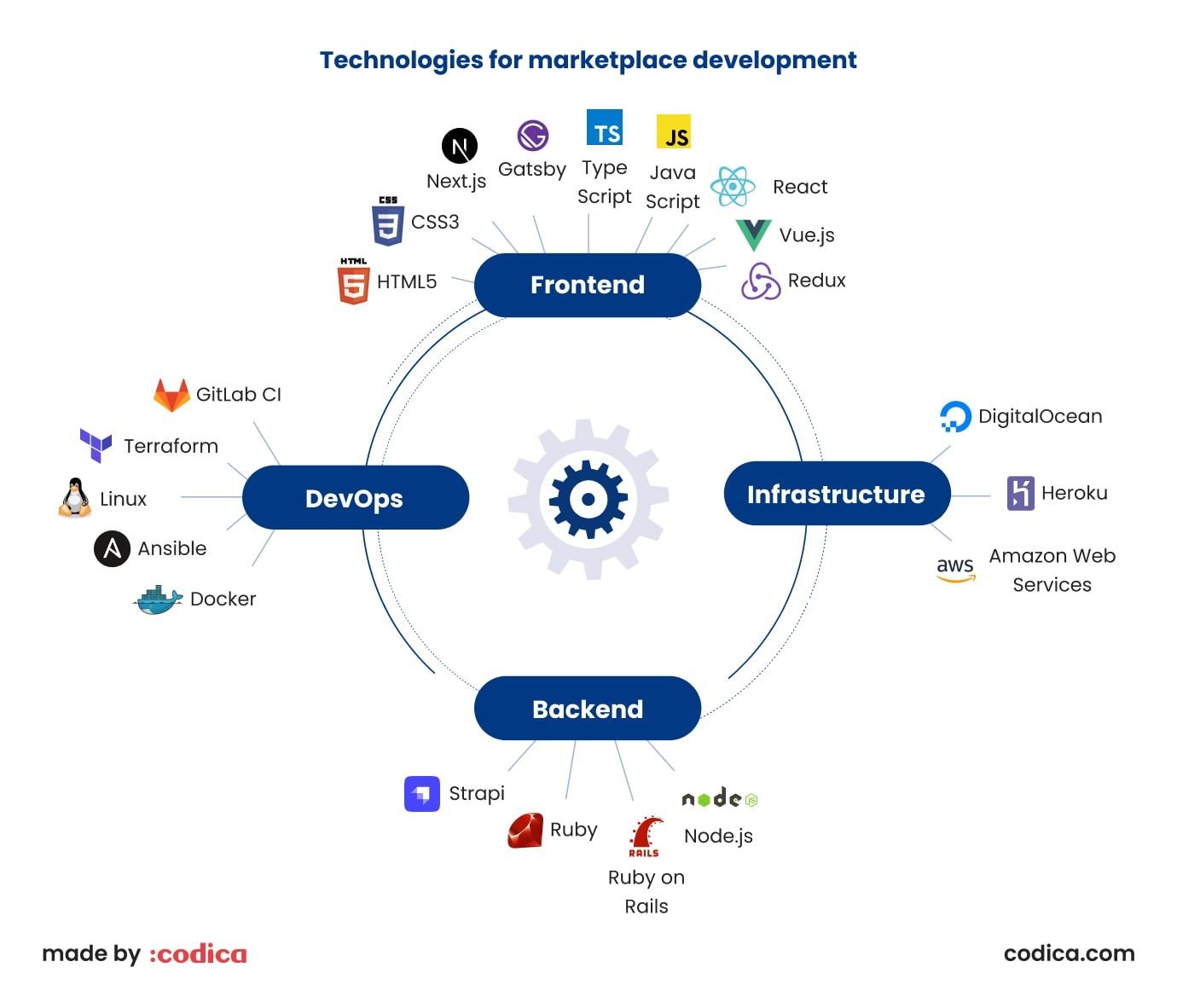
Step 5: Development
After aligning the digital product marketplace vision and design, the process passes to development. From our experience, the best project management methodology for development is agile. We use it to streamline the work between our teams in custom software development so that all specialists are on the same page.
The technical side of the development involves optimization with DevOps services and test-driven development. That means that we move in sprints and develop the solution in small blocks that are tested later as a whole.
We involve our clients and keep them informed at all stages. If adjustments are needed, we are ready to implement them thanks to our flexible project management approach.
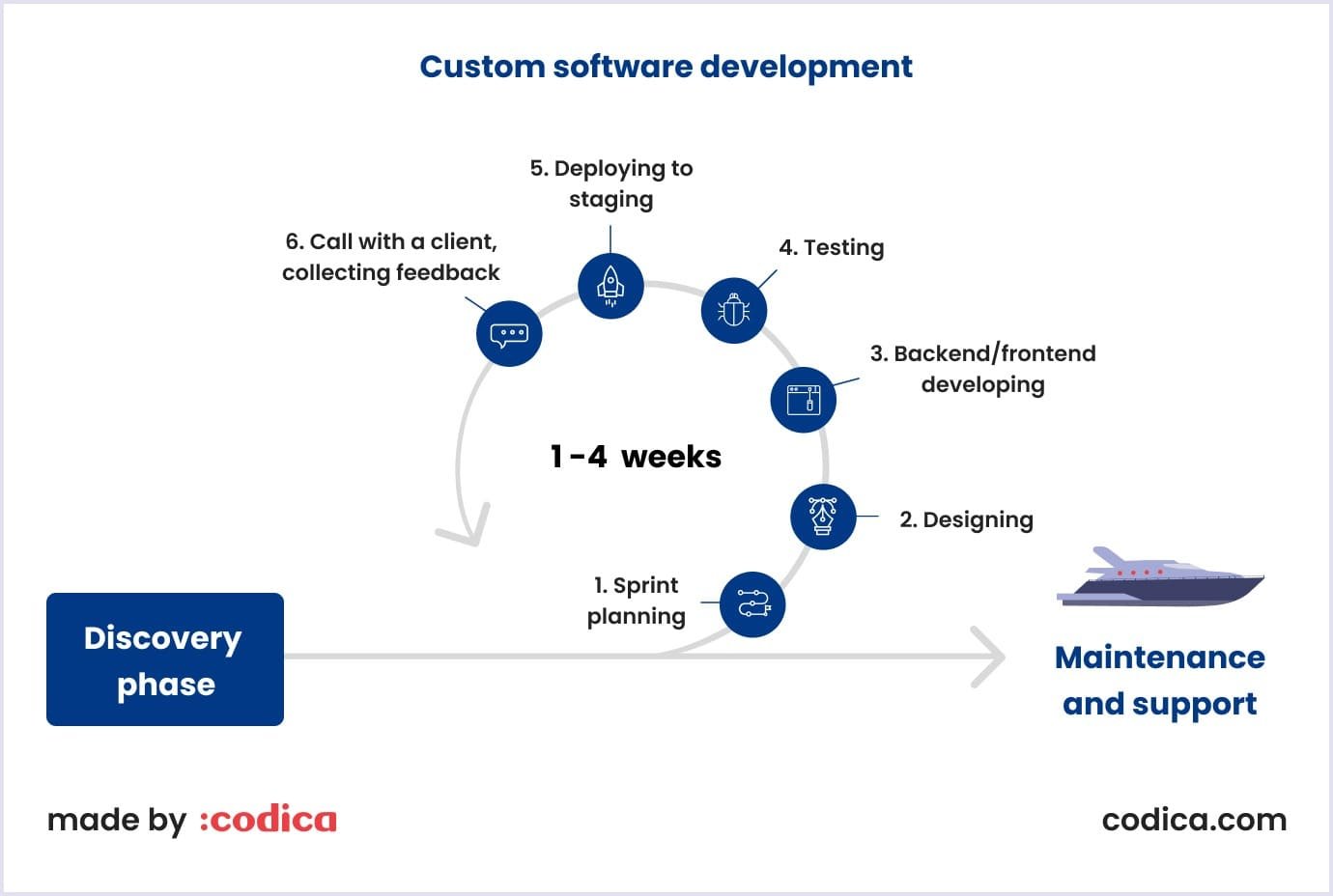
If you start your marketplace with MVP development services, you can validate your concept by involving real users early on. Thereby, you minimize risks and optimize development efforts.
Step 6: Testing
At this step, our team develops the testing strategy, which ensures that the product vision is implemented correctly and aligns with your business needs. We perform usability, performance, regression, and other quality assurance services necessary to ensure that all marketplace components work properly.
Thanks to checklists and acceptance criteria, our testing process is well-thought-out and considers possible use cases to test solution components.
Recommended reading: How Automation Testing Increases Execution Speed, Test Coverage, and Effectiveness
sStep 7: Maintenance and support
Finally, the marketplace is deployed. However, we do not stop here. To keep running, your platform needs timely updates and robust protection against security vulnerabilities. So, our developers, QA, and DevOps engineers ensure the proper monitoring of your solution.
In the support and maintenance of your platform, we rely on AWS, Prometheus, PagerDuty, and Grafana tools. They are proven instruments to monitor your solution, get timely alerts, and observe analytics.

Monetization strategies for subscription-based marketplaces
Tiered subscriptions
It is perhaps the most common monetizing strategy for subscription-based marketplaces that offer digital products. The concept is simple: depending on the content or features you provide, set specific levels and prices. Marketplaces also provide options for monthly and yearly charges with discounts for a longer time.
For example, DPD offers different tiers depending on product space and product number: three basic and seven levels more. Envato offers download plans for individual users, teams, and enterprises.
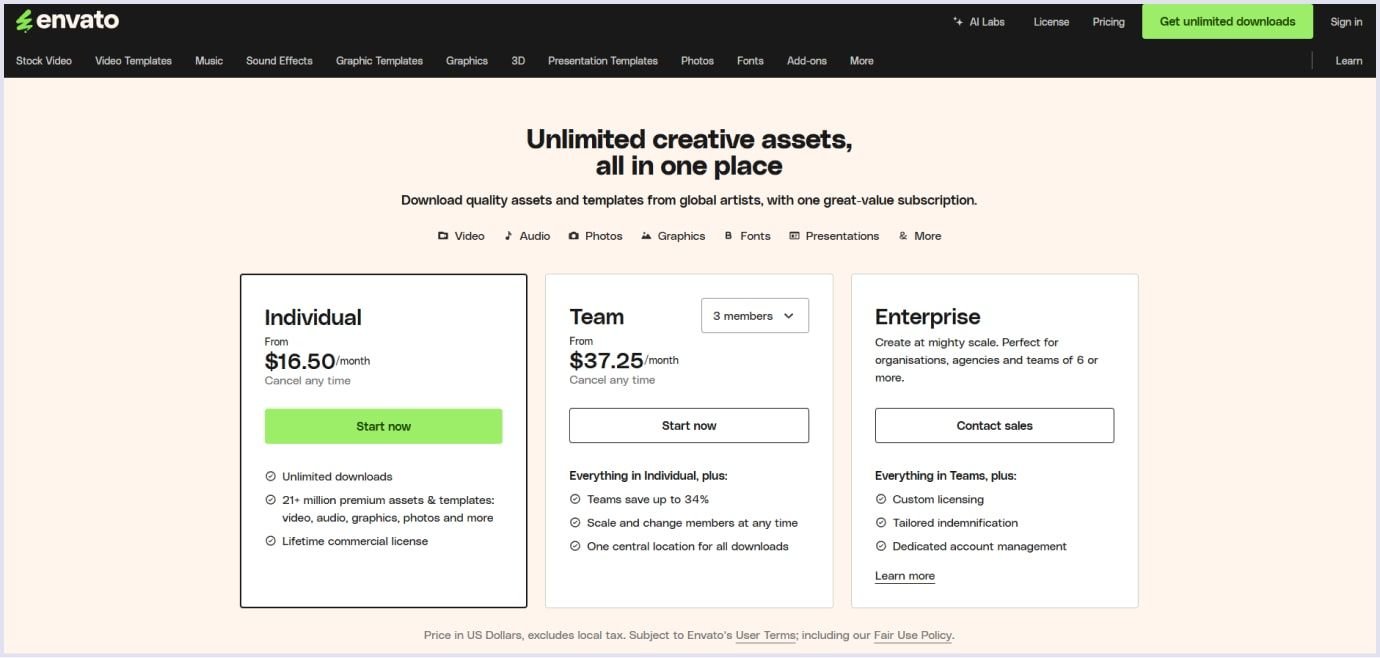
Source: Envato
Freemium models
This monetization approach combines paid subscriptions with free usage. You let users try your marketplace for a limited time or with specific options and then offer subscription plans for premium features.
For instance, Sellfy provides a free trial for 14 days; then users should switch to one of paid options if they wish.
Thinkific offers a free trial with limited course creation numbers and marketing tools so you can test the platform. If you want to continue using it, the platform suggests three plans with growing marketing and sales capabilities.
Commission-based earnings
Optionally, consider commission-based payments when you take a cut on each transaction. This model can be a good start or an offer for sellers who hesitate to take on subscription plans.
For example, Gumroad offers 10% + $0.50 per transaction and 30% per transaction when buyers find sellers through their discover marketplace.
Best practices for retaining subscribers
To keep your digital product marketplace up and running, ensure that you meet the needs and wants of your customers. Consider the aspects below.
Consistent value delivery
Make sure that your digital products are unique and offer what other marketplaces do not. These can be exclusive products, features, or services that sellers can provide and buyers want to purchase on your platform.
Personalized user experience
Personalization helps you reach your customers with the right offers based on their intent. This leads to delightful experiences and engagement with your platform. The following will help you personalize your marketplace experiences:
- Curate content and products based on your analytics data;
- Allow for profile and dashboard customizations;
- Use AI-powered tools to deliver product recommendations.
Responsive customer support
Let your customers get help via different channels. These may include helpful information on your platform and customer support team. Consider that your users can reach customer support via phone, email, or a chatbot.
Flexible subscription options
Ensure that your subscriptions are transparent and easy to handle with subscription management software. So, users can change or cancel their plans depending on their preferences and current goals.
Also, provide a simple and clear billing process. Explain it on the users’ subscription page and in your conditions of using the marketplace services.
How Codica created a domain name marketplace for Dan
Dan.com is a trustworthy domain sale website. The challenge for them was adding new features and redesigning the UI of the Portfolio, which is the core of the website. Also, the platform needed optimizations as it processed domain sale transactions daily.
Our team recreated the Portfolio section. As a result, it gained new features, optimizations, and a convenient interface. Sellers can now manage domain name categories for sale, rented, sold, and deleted.
The infinite scroll we added shows a list of domains instead of pagination, which brings ease of use. We also added the tools for bulk changes, improved table functionality, and revamped mobile designs.
As a result, the company got a solution that loads a page with 1,000 domain names in less than 2 seconds.
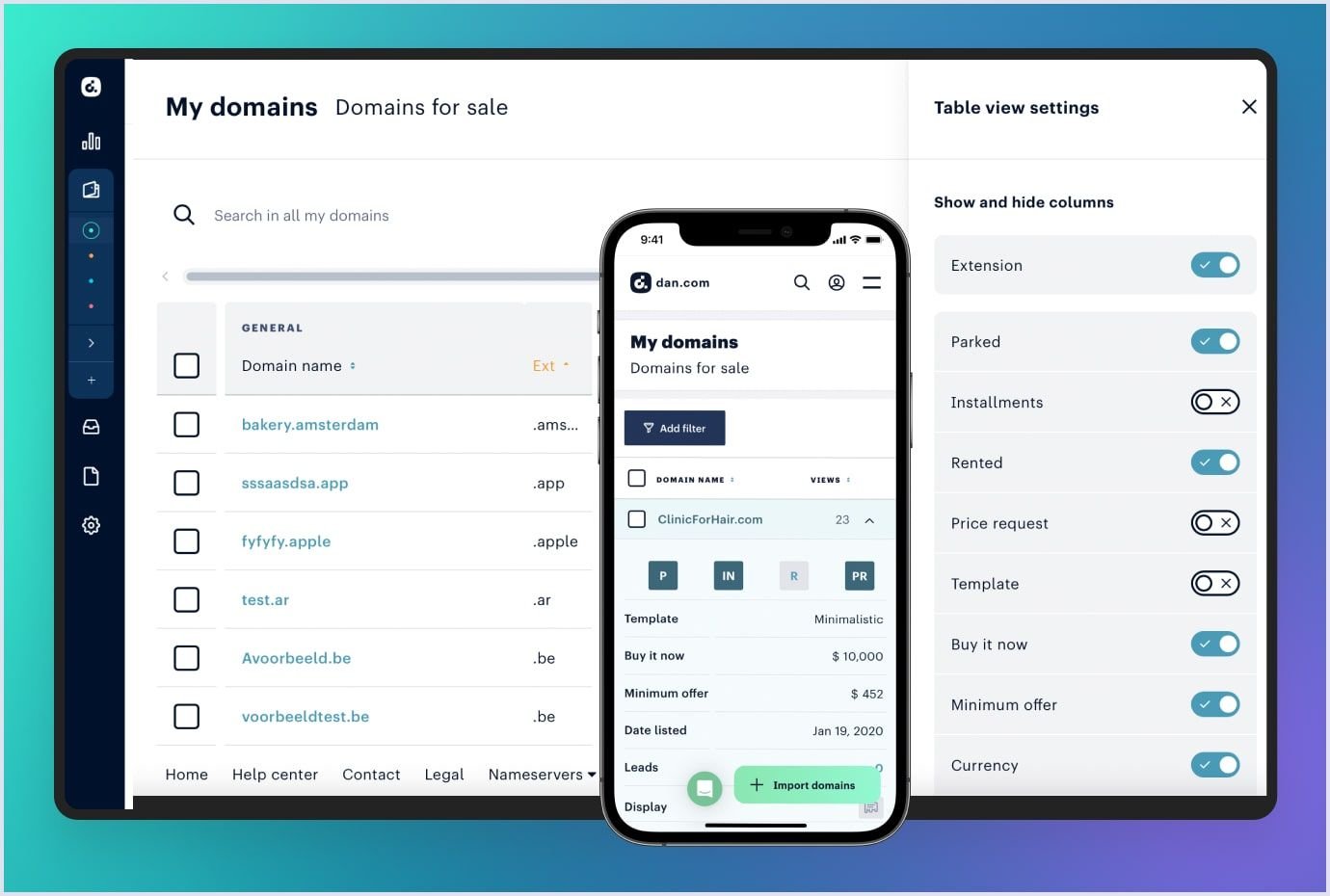
Check out our portfolio for more cases of marketplaces and other projects we have created over 9 years of our experience.
To wrap up
Building a digital product marketplace is a comprehensive process that involves careful planning and a strategy to implement. With the right approach, the development is optimized and helps you reach your goals in terms of the desired budget and timeline.
If you have a digital product marketplace project on your mind, contact us. Our team is eager to discuss the details and guide you through the process.
